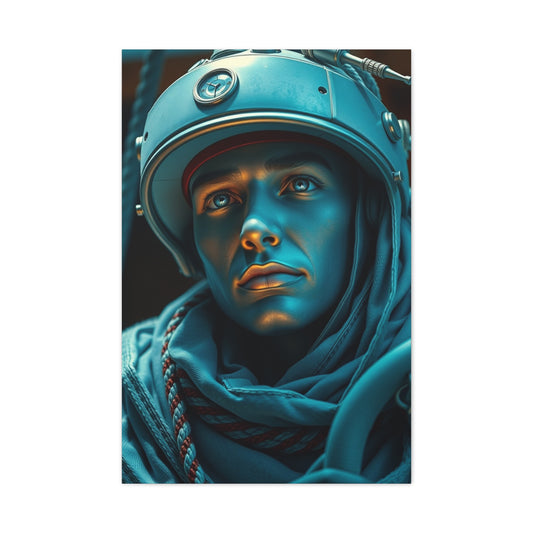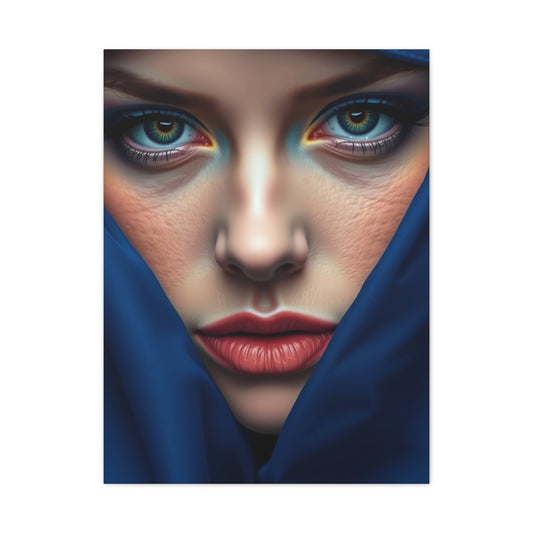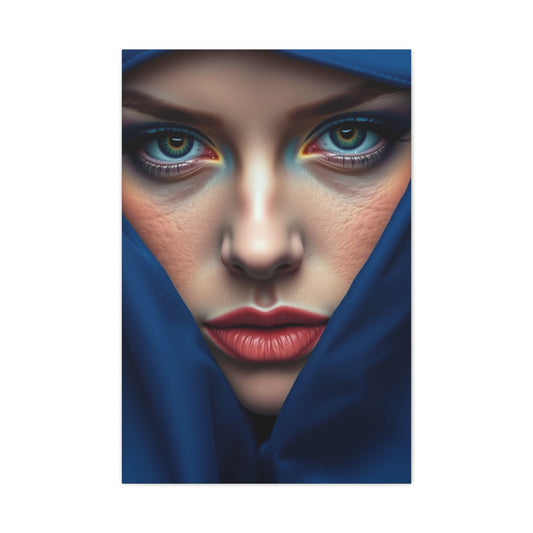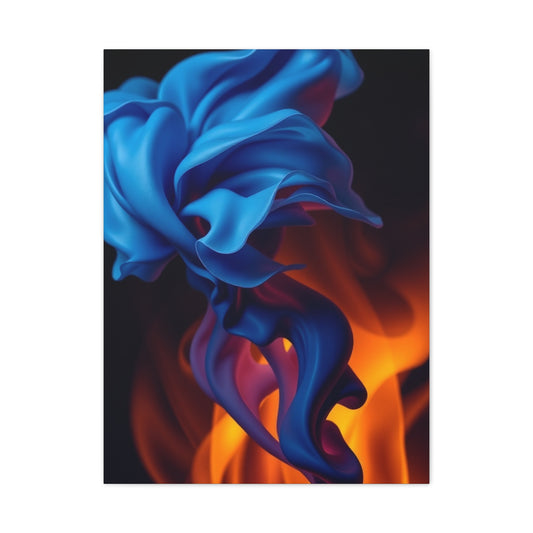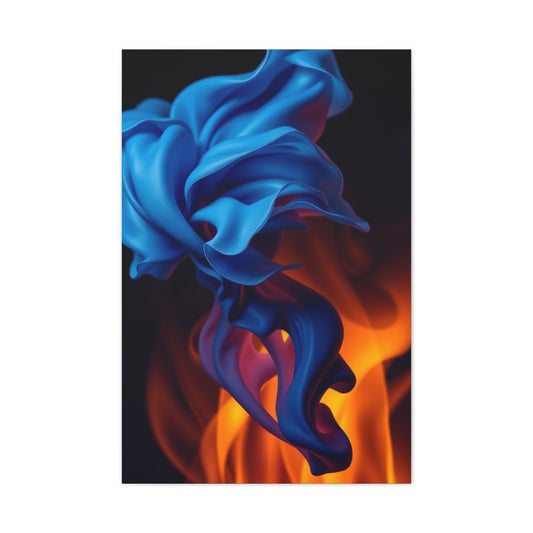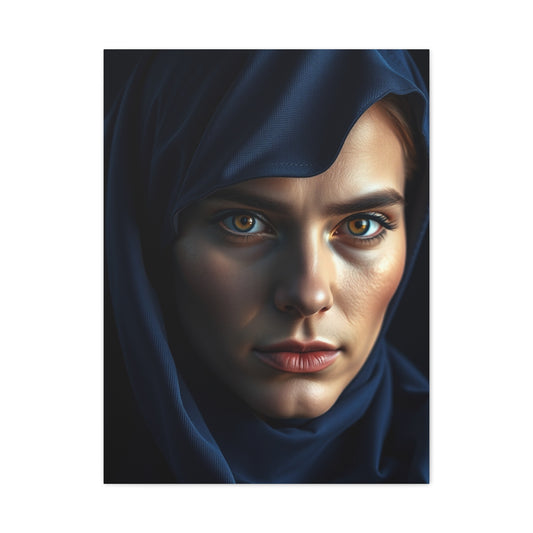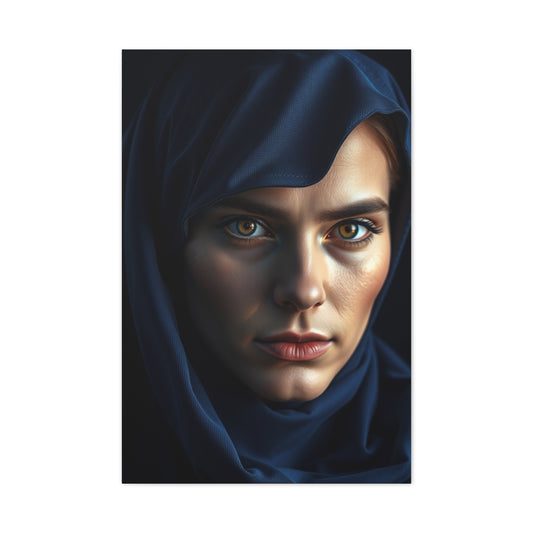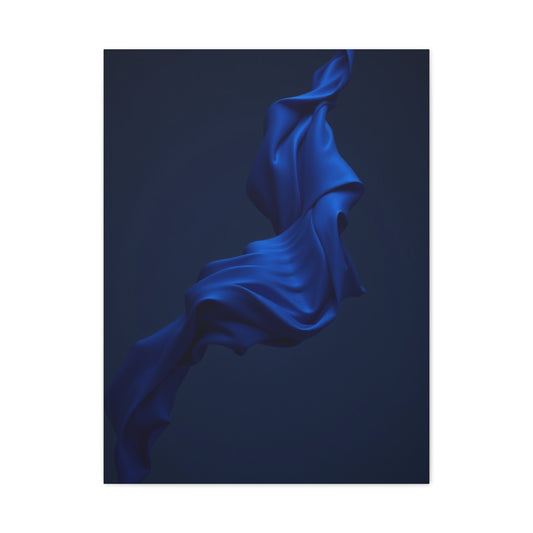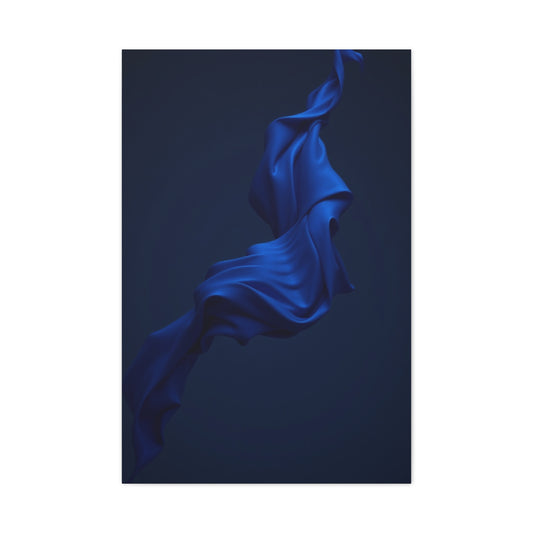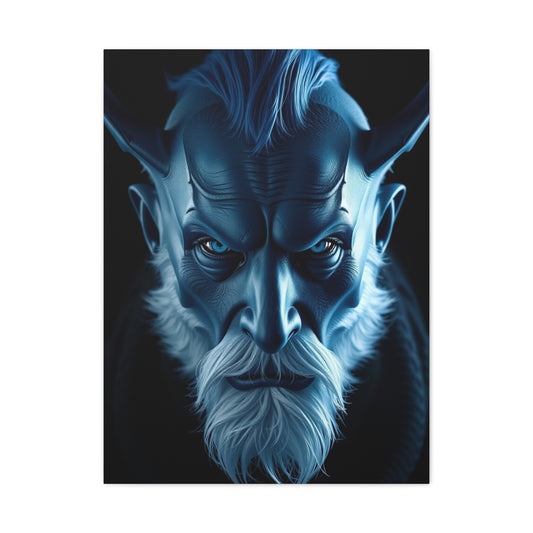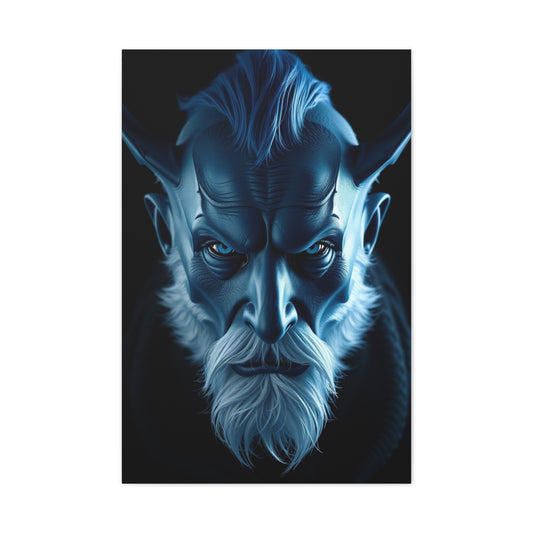Capturing fireworks in all their vibrant glory begins with understanding the importance of proper equipment. The camera you choose is just the first piece of the puzzle, but having the right supporting tools and accessories can make the difference between a blurred, overexposed photo and an image that perfectly captures the sparkle, color, and energy of the display. Firework photography requires long exposures, careful focus, and stability, which means preparation is just as crucial as skill.
One of the most important pieces of equipment is a sturdy tripod. Fireworks are typically shot at night with long shutter speeds, often lasting several seconds, and even the slightest movement can ruin a photo. A tripod provides the stability needed to hold the camera perfectly still. When selecting a tripod, look for one with solid legs and a reliable head that won’t shift under the weight of your camera. Avoid lightweight or flimsy tripods, as these may wobble in wind or on uneven ground, especially if you plan to capture bursts high in the sky. In some situations, if you don’t have a tripod, a flat and stable surface can serve as an alternative, but this often limits your angles and may require balancing the camera carefully to avoid accidental movements.
Another essential accessory is a remote shutter release. Manually pressing the shutter button can introduce tiny shakes that are magnified during long exposures. A remote release allows you to trigger the shutter without touching the camera, keeping the shot steady. Some cameras now offer wireless remote capabilities, letting you use a smartphone to trigger the shutter. This method has the added advantage of showing a live preview of your framing, helping you adjust composition and timing without moving the camera. Many photographers also use the camera’s self-timer if a remote is unavailable, though this restricts their ability to capture the exact moment a firework bursts. The remote release is particularly useful for bulb mode, where the shutter remains open as long as the button is pressed.
Choosing the right lens is equally important. Wide-angle lenses are perfect for capturing expansive firework displays, including elements of the surrounding environment, such as cityscapes, lakes, or crowds. These lenses help you frame multiple bursts in a single shot, giving a sense of scale and grandeur. Telephoto lenses, on the other hand, allow you to focus on individual explosions, highlighting intricate details and patterns in the fireworks. The choice of lens also affects depth of field, so consider how much of the background you want in focus. In low-light situations, lenses with manual focus capabilities are highly recommended. Autofocus can struggle in the dark, and continuous bursts of light may confuse the camera, resulting in missed shots.
Low-light conditions present additional challenges that can be managed with proper accessories. Long exposures drain battery power quickly, and shooting large displays can fill memory cards faster than expected. Carrying extra batteries and memory cards is essential to avoid interruptions during the show. A flashlight or smartphone with a strong light helps adjust camera settings in the dark. It allows you to see your controls clearly without disturbing your composition or accidentally creating lens flare. Some photographers even use a small LED headlamp, keeping both hands free to operate the camera and tripod.
Tripod placement is another crucial factor in achieving stunning firework shots. Ideally, you want a location with an unobstructed view of the sky. Hills, elevated platforms, or rooftops can provide better vantage points while avoiding trees, power lines, or other obstacles. Position yourself away from bright streetlights or vehicle headlights, as these light sources can create overexposed spots in your images, disrupting the balance of the photo. Planning where to set up also involves thinking about the direction of the wind, as smoke from fireworks can drift into your frame, affecting clarity. Arriving early allows you to choose the best position and test your camera settings before the display begins.
Including interesting foregrounds and backgrounds can elevate your firework photography from basic snapshots to artistic compositions. Elements like reflections on water, silhouettes of buildings, trees, or crowds of spectators can provide context, scale, and a sense of place. Consider how you can frame the fireworks within the environment to create a story or mood. Wide-angle shots that incorporate landmarks make the images more visually compelling and give viewers a sense of being part of the scene. Planning the shot composition before the fireworks start will save time and reduce stress during the display.
Camera settings are closely linked to your equipment choices. Using manual mode gives you full control over aperture, shutter speed, and ISO, allowing you to adjust based on the conditions and the type of fireworks being launched. Shutter speed is particularly important because it determines how long the light from the fireworks is recorded. Long exposures can capture multiple bursts in a single frame, creating streaks and trails of color. Bulb mode is ideal for this, as it lets you control the exposure duration manually. Aperture settings between f/8 and f/16 help maintain depth of field and prevent overexposure, especially during bright bursts. Keeping ISO low, around 100–200, reduces digital noise, which is more noticeable in night photography.
Manual focus is often necessary for accurate shots. Autofocus struggles in dark environments, especially when the subject is constantly moving and changing in brightness. Setting your lens to infinity ensures distant fireworks remain sharp. Taking a few test shots before the show can confirm focus and framing, giving you a baseline to adjust during the event. It’s also important to experiment and adapt during the display. Firework patterns and intensity vary, so adjust exposure times and framing to accommodate different bursts. Observing the first few rockets provides insight into timing, brightness, and how the explosions fill the sky, allowing you to refine your technique for subsequent shots.
Weather conditions can also affect your equipment choices. Wind can move the tripod slightly or carry smoke in unpredictable ways, and humidity can cause lenses to fog. Preparing for these conditions with lens hoods, protective covers, and even simple wind barriers can help protect your equipment and improve image quality. Dress appropriately for the environment, and make sure your hands are free to operate the camera without obstruction. Protecting your gear from moisture, dust, or accidental knocks ensures a smoother shooting experience.
Ultimately, choosing the right equipment is about preparation, flexibility, and understanding the technical requirements of firework photography. A stable tripod, remote shutter release, appropriate lens, extra batteries, memory cards, and lighting tools form the foundation of successful shooting. Combining these tools with thoughtful planning, proper camera settings, and attention to environmental factors enables photographers to capture fireworks at their most spectacular. With the right preparation, each shot becomes an opportunity to freeze a fleeting moment of color, light, and motion in a way that recreates the excitement and wonder of the display.
Firework photography challenges you to balance technical skill with creative vision. The right equipment allows you to focus on composition, timing, and storytelling through your images rather than worrying about blurred shots or missed opportunities. Understanding how your gear interacts with low-light conditions, long exposures, and moving subjects empowers you to experiment confidently and push the limits of what’s possible. Whether shooting a small backyard display or a massive public show, having the right tools ensures you can capture images that are both technically sound and artistically compelling.
The careful selection of equipment, combined with preparation and attention to detail, forms the cornerstone of firework photography. By anticipating the challenges of stability, focus, exposure, and environmental factors, you position yourself to create images that convey the drama, beauty, and excitement of fireworks. Every choice, from tripod height to lens type to shutter release method, contributes to the overall quality of your photographs, giving you the confidence to explore new compositions and techniques. With proper equipment in hand, capturing stunning, memorable images of fireworks becomes not only achievable but deeply rewarding.
Mastering Camera Settings for Stunning Firework Captures
Firework photography presents a unique challenge, as it requires balancing exposure, focus, and motion to capture the brilliance of each explosion against the night sky. Unlike daytime photography, where light is abundant and camera settings can often rely on auto modes, night-time fireworks demand deliberate choices in shutter speed, aperture, ISO, and focus. Understanding how each setting affects the final image allows photographers to craft images that are both technically sound and visually striking.
Shutter speed is arguably the most critical factor in firework photography. The goal is to record the trail of light created by fireworks as they burst and descend. Longer shutter speeds allow multiple bursts to be captured in a single frame, creating a layered effect that emphasizes movement and energy. Bulb mode is particularly useful, as it allows the photographer to keep the shutter open for as long as necessary. By holding the shutter open during the entire firework explosion, the camera can capture every streak of light. As a starting point, exposures ranging from 5 to 15 seconds work well for single bursts, but experimentation is key. Each type of firework behaves differently, with some igniting quickly and fading fast, while others linger and expand slowly across the sky. Adjusting the exposure to match the speed and brightness of the fireworks ensures the trails are fully captured without losing detail.
Aperture settings control the depth of field and the amount of light entering the camera. For firework photography, an aperture between f/8 and f/16 typically provides a sharp image with sufficient depth of field to keep the fireworks in focus. Smaller apertures help reduce the intensity of bright bursts, preventing overexposure. Larger apertures, while allowing more light in, may result in blown-out highlights where the fireworks appear as white blobs rather than colorful streaks. Balancing aperture with shutter speed is essential; the combination determines how much light reaches the sensor and how detailed the resulting image will be. In general, starting with f/11 and adjusting based on your observations during the display produces consistent results.
ISO is another essential factor that impacts image quality. High ISO settings amplify the sensor’s sensitivity to light, making it easier to capture faint bursts in dark environments. However, high ISO also increases digital noise, which can degrade image clarity and reduce the vibrancy of colors. Keeping ISO low, typically between 100 and 200, ensures cleaner images with minimal noise. With a stable tripod and long exposures, a low ISO is sufficient to capture fireworks brightly without the need for amplification. Experienced photographers often prioritize low ISO settings over shorter shutter speeds to maintain maximum image quality while still recording the full motion of the fireworks.
Focus is one of the trickiest aspects of firework photography. Autofocus systems often struggle in low light, failing to lock onto fast-moving, unpredictable bursts. Manual focus is usually more reliable. Setting the lens to infinity ensures distant fireworks remain sharp, and fine-tuning with test shots helps avoid slight blurring caused by improper focus. Including foreground elements, such as buildings, water reflections, or silhouettes of spectators, may require slight adjustments in focus to keep both the fireworks and the environment sharp. Some photographers use a distant point of light or the first few bursts of the display to manually set focus, providing a baseline for the rest of the show.
Timing is also crucial when working with camera settings. Fireworks are unpredictable, and each burst has its own rhythm. Using a remote shutter release or a camera with bulb mode allows you to start the exposure just before the firework launches and end it after the trail has fully formed. This technique maximizes the length and detail of the light trails. During multi-burst displays, covering the lens between exposures can prevent overexposure while still accumulating multiple trails in one frame. This method gives the impression of continuous motion across the sky while maintaining clean, vibrant colors.
Experimentation is a core part of mastering firework photography settings. No two displays are identical, and environmental factors such as wind, smoke, and ambient light influence how settings interact. Starting with test exposures at the beginning of a show allows photographers to adjust their approach. A display may begin with small, rapid bursts followed by large, slow-moving explosions. Adjusting shutter speed, aperture, and timing for each type of firework helps capture the full range of colors and patterns without underexposing or overexposing the image. Learning to read the fireworks and anticipate their behavior is a skill developed through practice and observation.
Understanding white balance is another subtle yet important aspect. While the camera’s auto white balance can perform adequately, manually setting it ensures consistent color reproduction across multiple bursts. Fireworks produce vivid reds, greens, blues, and yellows, and the wrong white balance can shift hues or make colors appear dull. Setting white balance to daylight or a custom Kelvin temperature around 5000–6000K often preserves the natural vibrancy of the explosions. This consistency is especially valuable when compiling multiple images into a series or creating time-lapse compositions.
In addition to camera settings, the surrounding environment interacts with exposure and focus. Ambient lights, such as street lamps, car headlights, or illuminated buildings, can introduce unwanted flares or overexposed spots in long-exposure images. Careful framing and positioning of the camera help avoid these distractions. Including foreground and background elements strategically can enhance the image, but it requires balancing exposure so that the fireworks remain the main focus while other elements are visible but not overwhelming. A properly adjusted exposure ensures the scene appears natural, with fireworks shining brightly without washing out nearby features.
Light trails and motion blur add an artistic element to firework photography, and adjusting settings directly influences their appearance. Longer exposures create continuous, flowing trails, while shorter exposures capture bursts in isolated frames, highlighting the shape of each firework. Combining multiple exposures in post-processing can enhance the image, producing layered compositions with multiple bursts while maintaining clarity and vibrancy. This technique requires precise control of exposure and timing, emphasizing the importance of mastering camera settings during the shoot.
Finally, preparation and practice are essential for perfecting camera settings. Arriving early allows for testing and adjusting settings before the main display begins. Observing the first bursts and making small tweaks in shutter speed, aperture, ISO, and focus ensures the camera is optimized for the entire show. Carrying extra batteries and memory cards guarantees uninterrupted shooting, allowing you to experiment freely without worrying about running out of power or storage. Documenting settings that work well for different types of displays also builds a personal reference, making future fireworks photography easier and more consistent.
Mastering camera settings is not just about technical precision; it is also about creativity and timing. Each setting influences the final image, and understanding their interplay gives you control over the narrative you create with your photos. Whether capturing short, sharp bursts of light or long, flowing trails across the sky, adjusting shutter speed, aperture, ISO, focus, and white balance allows photographers to bring out the full beauty of fireworks. By combining careful preparation, experimentation, and observation, you can consistently produce images that are vibrant, detailed, and visually compelling.
With practice, controlling camera settings becomes intuitive. Photographers learn to anticipate the size, brightness, and speed of each firework, adjusting exposure to match the display’s intensity. Experimenting with different combinations of settings results in diverse visual effects, from crisp bursts against a dark sky to dramatic, painterly trails of light. Understanding the technical aspects of exposure and motion enables creativity to flourish, transforming firework photography from a simple hobby into a form of artistic expression. By mastering camera settings, you unlock the ability to capture fireworks in all their dynamic beauty, producing images that convey the magic and excitement of each fleeting explosion.
Overcoming Ambient Light Challenges and Composing Fireworks for Dynamic Shots
Firework photography is not just about capturing the bursts of color in the sky; it also involves navigating the surrounding environment and using it to enhance your images. One of the biggest challenges photographers face during fireworks displays is managing ambient light. Streetlights, car headlights, illuminated buildings, and other sources of artificial light can easily interfere with long-exposure shots. Left unchecked, these light sources can cause overexposure, unwanted flares, and distractions that pull attention away from the fireworks themselves. Understanding how to handle these challenges and using the environment creatively is key to producing dynamic and captivating photographs.
Planning your shooting location is the first step in overcoming ambient light issues. A clear and unobstructed view of the sky is essential, as any physical obstruction—trees, poles, or structures—can interfere with framing. Equally important is assessing nearby light sources that might affect your exposure. Position yourself so that bright streetlights are behind or to the side of the camera, rather than directly in the frame. Even low-intensity lights can create streaks or flares during long exposures, which can muddy your images. If possible, elevate your camera on hills, rooftops, or raised platforms to minimize ground-level lighting while maximizing your view of the sky.
Choosing the right lens and focal length can help mitigate ambient light issues while enhancing composition. Wide-angle lenses capture expansive firework displays and incorporate foreground or background elements for context. This approach can turn a simple burst into a visually compelling scene, showing reflections on water, silhouettes of trees, or architectural features. Telephoto lenses, on the other hand, isolate individual bursts and allow you to focus on color and detail, minimizing the influence of surrounding lights. By carefully selecting your lens and framing your shot, you can control how much ambient light enters the frame while still telling a story through your composition.
A critical aspect of firework photography is understanding exposure settings in relation to ambient light. Long exposures are necessary to capture the trails and bursts of fireworks, but they also increase the chance of overexposing areas affected by stray lights. Using a smaller aperture, such as f/8 to f/16, reduces the amount of light entering the lens, helping maintain balanced exposures. A low ISO, typically around 100–200, minimizes digital noise and prevents unwanted brightness from low-level lighting sources. Combining these settings with careful timing ensures that the fireworks shine without overpowering the surrounding scene.
Timing is crucial when dealing with ambient light. Observing the first few bursts provides insight into how light from fireworks and the environment interacts on camera. By timing exposures to coincide with the brightest sections of a burst, you can reduce the risk of capturing unnecessary background glare. Some photographers use short bursts of exposure to capture individual explosions, while others employ longer exposures to create layered trails. Both techniques require adjusting settings based on the ambient light present, as longer exposures naturally accumulate more unwanted light from the surroundings.
Foreground and background elements play an essential role in creating dynamic compositions. Including trees, bridges, water bodies, or crowds adds context and scale, giving viewers a sense of place. Silhouettes against a fiery sky can dramatically enhance the visual impact of your shots. Reflections on water amplify the colors and patterns of fireworks, creating symmetrical and immersive images. However, integrating these elements requires balancing exposure so that the foreground is visible without detracting from the vibrancy of the fireworks. Using a tripod ensures stability while experimenting with different compositions, especially during long exposures.
Smoke from fireworks is another environmental factor that influences composition. As a show progresses, trails of smoke accumulate and can obscure bursts if exposures are too long or if the wind shifts. Observing wind direction and speed helps in positioning the camera so that smoke does not interfere with critical parts of your frame. Some photographers use the smoke creatively, allowing it to diffuse light and add atmosphere to the scene. Understanding how environmental conditions interact with light and motion is essential for creating striking and dynamic images.
Camera settings also interact with ambient light in nuanced ways. Manual exposure control allows photographers to adapt to changing conditions. Adjusting shutter speed, aperture, and ISO based on the amount of ambient light ensures that the fireworks remain the primary focal point. For example, when photographing near water or reflective surfaces, slightly shorter exposures can prevent over-bright reflections while still capturing full trails of light. Conversely, in areas with minimal ambient light, longer exposures can help accumulate multiple bursts in one frame, enhancing the sense of motion and scale. Each adjustment requires careful observation and experimentation during the display.
Using light creatively is not limited to managing distractions. You can incorporate ambient light to add depth, texture, and context to your images. Streetlights, buildings, and illuminated landmarks can act as natural frames, guiding the viewer’s eye toward the fireworks. Subtle foreground lighting highlights silhouettes or reflections without overpowering the main subject. Even distant city lights can provide a sense of scale and perspective, making the bursts of color feel larger and more dramatic. Understanding how to balance these elements enhances your ability to compose visually engaging photographs.
Foreground elements also help provide context for the scale of fireworks. Small crowds, trees, or architectural features show the relative size of each burst, making your images feel more immersive. Wide-angle shots that incorporate these elements can turn a simple display into a storytelling photograph, capturing both the excitement of the moment and the environment in which it occurs. Strategic framing allows photographers to include these elements without interfering with exposure or clarity, creating a sense of depth and layering in the final image.
Composing fireworks involves anticipating movement and timing. Bursts unfold rapidly and unpredictably, so preparing your composition beforehand is crucial. Identify areas where the sky will be most visible and adjust framing to allow bursts to fill the space dynamically. Consider vertical and horizontal orientations; vertical compositions emphasize the height of the explosions, while horizontal compositions capture multiple bursts across the sky. Planning these elements ahead of time ensures a balanced composition, allowing you to focus on capturing the perfect moment as the fireworks ignite.
The combination of ambient light management and dynamic composition transforms firework photography from a technical exercise into an art form. By understanding how environmental light interacts with your camera settings and by strategically framing foreground and background elements, you can create images that convey excitement, scale, and atmosphere. Experimenting with angles, reflections, and silhouettes adds uniqueness to each photograph, helping your images stand out from standard snapshots.
Finally, preparation and adaptability are critical. Arriving early allows you to scout locations, assess lighting conditions, and determine potential compositions. Test shots help identify problematic light sources or areas of shadow, allowing you to make adjustments before the main display. Being adaptable during the show—shifting angles, changing settings, or incorporating new elements—ensures that you capture a variety of images that are technically sound and visually compelling. Observing the fireworks, the environment, and the interaction between the two helps photographers create a cohesive and engaging series of images.
Mastering ambient light challenges and composition is an ongoing learning process. Each firework display is unique, with different patterns, brightness levels, and environmental factors. By understanding how light behaves, framing thoughtfully, and using foreground and background elements creatively, photographers can consistently produce images that capture the excitement and beauty of fireworks. The balance of technical skill, artistic vision, and adaptability allows for photographs that are not only visually stunning but also tell the story of the event compellingly and memorably.
Advanced Shooting Techniques and Capturing Multiple Firework Bursts
Once you’ve mastered the basics of firework photography and learned to manage your camera settings and ambient light, it’s time to explore advanced techniques that elevate your images from standard shots to breathtaking compositions. Capturing multiple bursts in a single frame, creating dynamic light trails, and experimenting with exposure tricks allow photographers to showcase the full energy and vibrancy of a fireworks display.
One of the most effective techniques for capturing multiple bursts is using long exposures combined with careful timing. Long exposures allow several explosions to accumulate on the camera sensor, creating layered trails of color across the sky. Bulb mode is ideal for this approach, as it gives you full control over how long the shutter remains open. During a prolonged exposure, the first burst ignites, leaving streaks of light that continue to glow as subsequent bursts follow. By controlling when you open and close the shutter, you can ensure that each firework is captured in its full glory without overexposing the frame.
Covering the lens between bursts is another advanced technique that helps manage exposure while stacking multiple explosions. Using a piece of black card or a lens cap, you can temporarily block incoming light during intervals when the sky is empty. This method prevents bright areas from becoming overexposed while allowing previous bursts to remain visible in the frame. Timing is critical for this technique. You must lift the cover just before the next burst begins and replace it afterward. With practice, this approach enables photographers to create stunning multi-burst images that appear continuous, vibrant, and full of motion.
Layering multiple exposures is also achievable through digital post-processing. By capturing several shorter exposures of individual bursts and then combining them in software, you can achieve the effect of long, continuous trails without risking overexposure. This technique gives more control over each layer of fireworks, allowing for precise color balance and selective enhancement. While long in-camera exposures are ideal for spontaneous effects, post-processing stacking offers an alternative method for photographers seeking meticulous control over their final image.
Timing and anticipation play a significant role in capturing advanced firework shots. Understanding the rhythm of a display helps you predict when the next burst will occur, allowing you to open the shutter at the optimal moment. Early bursts can be used to test framing and exposure, giving insight into the intensity, duration, and speed of subsequent fireworks. Experienced photographers often mentally track patterns, noticing which types of shells produce quick bursts versus slower, lingering trails. Anticipating the display’s dynamics ensures that each exposure captures the peak of the fireworks’ beauty.
Using a combination of wide-angle and telephoto lenses adds versatility to advanced techniques. Wide-angle lenses are excellent for capturing expansive scenes, multiple bursts, and foreground elements like silhouettes, reflections, and landmarks. Telephoto lenses isolate single explosions, emphasizing intricate details and vibrant patterns. By experimenting with different focal lengths, photographers can create a diverse series of images from one event, showcasing both the grandeur and the delicate artistry of fireworks. Switching between lenses during a display or setting up multiple cameras at different focal lengths expands creative possibilities.
Creative use of foregrounds is another powerful tool for advanced firework photography. Including elements like water reflections, architecture, or trees can enhance depth and composition. Reflections on water amplify the colors of fireworks, doubling the visual impact and creating symmetry that draws the viewer’s eye. Silhouetted landmarks provide context and scale, emphasizing the enormity of each explosion. By thoughtfully framing these elements, you can transform a simple burst of light into a rich, immersive scene that tells a story beyond the fireworks themselves.
Experimenting with exposure settings is central to capturing advanced effects. Longer shutter speeds create flowing trails of light, while shorter exposures capture bursts in sharp isolation. Adjusting aperture and ISO in tandem with shutter speed ensures that each burst maintains vibrant colors and proper contrast. Some photographers intentionally underexpose initial shots to preserve detail in bright bursts, then slightly increase exposure for subsequent frames to maintain consistency. This dynamic adjustment throughout the display produces balanced, visually compelling images with a variety of light intensities.
Smoke can be used creatively in multi-burst photography to add atmosphere and depth. Fireworks produce a haze as the display progresses, which can diffuse light and create softer trails. Positioning your camera to capture bursts against or through drifting smoke adds a painterly quality to your images, emphasizing motion and color blending. Wind direction is important here; a gentle breeze can carry smoke out of the frame, maintaining clarity, while stagnant air can result in hazy, overly dense images. Understanding environmental factors and adjusting your approach ensures that smoke enhances rather than obscures your composition.
Advanced photographers often experiment with motion techniques, such as panning and intentional camera movement. While a tripod ensures stability during standard exposures, slight, controlled movement can produce artistic streaks and abstract compositions. For example, moving the camera vertically or horizontally during a long exposure can create dynamic, flowing lines that mimic the motion of fireworks in the sky. These techniques require experimentation and practice, but they can result in highly creative and unique images that stand out from conventional firework photography.
Combining multiple exposures with careful framing allows for complex compositions that capture the full spectrum of a display. For instance, stacking images of bursts that occur at different heights and locations in the sky creates the impression of a continuous, interconnected pattern of light. By carefully managing exposure times, photographers can ensure that each layer maintains clarity, color vibrancy, and distinct separation from other bursts. This technique emphasizes the movement, scale, and variety of fireworks, producing images that feel alive and immersive.
Attention to detail during post-processing enhances advanced images even further. Adjustments to contrast, saturation, and clarity help bring out the vivid colors of fireworks while maintaining balance with the surrounding environment. Cropping or aligning images can emphasize particular bursts or align multiple exposures seamlessly. Sharpening trails and reducing noise enhances overall image quality, particularly for long-exposure shots taken at low ISO. Post-processing is not a substitute for proper camera technique but rather a way to refine and elevate images captured during the event.
Finally, preparation and adaptability remain critical for advanced techniques. Arriving early to test camera settings, scout compositions, and observe ambient light conditions ensures readiness for complex exposures. Practicing timing, stacking bursts, and experimenting with creative movements develops confidence and mastery. Firework displays are unpredictable, and the ability to adjust in real time—switching exposure times, repositioning the camera, or modifying compositions—enables photographers to seize the most visually compelling moments.
Advanced shooting techniques transform firework photography into a blend of technical skill and creative artistry. By mastering long exposures, layering bursts, incorporating foreground and reflections, experimenting with motion, and refining images in post-processing, photographers can create images that capture the full energy, color, and beauty of fireworks. These approaches move beyond simple snapshots, producing dynamic, immersive compositions that convey the excitement and spectacle of a fireworks display.
Practical Tips for Lens Handling, Timing, and Preventing Overexposure
Capturing fireworks at their most spectacular requires more than just camera settings and composition; it demands precise handling of your lens, careful timing, and strategies to avoid overexposure during long exposures. Each of these elements plays a crucial role in producing clean, vibrant, and visually stunning images that truly capture the magic of a display.
Proper lens handling begins with selecting the right type of lens and understanding its characteristics. Wide-angle lenses allow for expansive shots that incorporate the surrounding environment, including reflections, silhouettes, and landmarks. Telephoto lenses isolate individual bursts, emphasizing intricate patterns and vibrant colors. For both lens types, stability is key. Mounting your camera securely on a tripod is essential, as even the slightest movement during a long exposure can cause blurring. A tripod with a sturdy head and adjustable legs allows precise framing while minimizing vibration. Avoid leaning on the tripod or touching the camera unnecessarily during exposures, as this can disturb the lens and compromise image clarity.
Cleaning and maintaining your lens is equally important. Firework displays often occur outdoors, where dust, moisture, and smoke can accumulate on the lens surface. Even a small smudge can reduce contrast, blur details, or create unwanted flares. Wiping the lens carefully with a microfiber cloth and checking it periodically during the event ensures clarity and consistency. Using a lens hood can also help reduce stray light entering from ambient sources, preventing lens flares that may otherwise wash out portions of your image. Protecting the lens from moisture, particularly in humid or foggy conditions, is crucial to maintaining sharpness and color accuracy.
Focusing accurately is another vital aspect of lens handling. Autofocus systems often struggle in low-light conditions, and rapid bursts of fireworks can confuse the camera’s sensors. Manual focus is generally more reliable. Setting the lens to infinity is a common starting point, but fine-tuning focus using the first few bursts of the display ensures that all fireworks are crisp and well-defined. Including foreground elements requires adjusting focus slightly to maintain depth of field without compromising the clarity of distant explosions. Checking focus periodically during the display is important, especially if the camera or tripod is moved slightly.
Timing exposures effectively is essential for capturing the full impact of each burst while preventing overexposure. Long exposures accumulate light, which can create beautiful trails but also risk washing out bright bursts or ambient elements. Bulb mode is particularly useful, allowing photographers to manually control the shutter for each shot. The key is to open the shutter just before the firework launches and close it after the explosion has fully unfolded. Anticipating the trajectory and duration of different types of fireworks ensures that exposures capture the entire burst without cutting off trails or leaving gaps.
For multi-burst compositions, controlling exposure between bursts is critical. Using a black card, lens cap, or other cover to temporarily block the lens during empty intervals prevents overexposure while allowing previous bursts to remain visible. This technique requires precise timing, lifting the cover just before the next explosion and replacing it afterward. Practicing this method beforehand helps develop the reflexes needed to execute it successfully during a live display. Combining this with multiple exposures in post-processing allows photographers to create complex, layered compositions that showcase the full range of colors and patterns without compromising brightness or clarity.
Adjusting aperture and ISO in real time can also prevent overexposure. Smaller apertures, such as f/11 to f/16, reduce the amount of light entering the lens, helping maintain detail in bright bursts. Low ISO settings, typically 100–200, minimize noise while ensuring proper exposure. Observing how different fireworks behave—some bright and rapid, others slower and more diffuse—allows photographers to fine-tune settings on the fly. Being flexible and ready to adapt ensures that every exposure captures the fireworks at their peak without washing out the image.
Managing ambient light is another crucial factor in preventing overexposure. Streetlights, vehicle headlights, and illuminated buildings can introduce additional light sources that compete with fireworks. Positioning your camera to minimize these distractions is the first step. Adjusting exposure settings based on surrounding light ensures that the bursts remain the dominant visual element. When including foreground elements, balance exposure so that the environment is visible but not overpowering. Reflections on water, silhouetted trees, and architectural features can enhance composition, but they require careful exposure management to avoid washing out the scene.
Timing also involves capturing bursts in sequence for multi-layered shots. Observing the rhythm of the display and anticipating bursts allows you to open the shutter for the right duration. Some photographers prefer multiple short exposures, which can then be combined in post-processing to create the appearance of continuous trails. Others use long exposures and carefully cover the lens between bursts. Both methods require attention to timing, ensuring that each burst is captured fully while maintaining overall balance and avoiding overexposure.
Using filters can enhance control over light and exposure. Neutral density filters reduce the intensity of light entering the lens, allowing longer exposures without overexposing bright bursts. Polarizing filters can reduce glare from reflections and enhance color saturation. While filters are not essential for all firework photography, they provide additional control and creative flexibility, especially in environments with strong ambient light or reflective surfaces.
Battery management and memory card preparation are also practical considerations. Long exposures and repeated shutter activations consume battery quickly. Fully charged batteries, with spares on hand, ensure uninterrupted shooting. Similarly, large memory cards with ample space prevent interruptions that could force you to stop shooting at critical moments. Planning for power and storage allows you to focus on lens handling, timing, and creative composition without distraction.
In addition to technical preparation, practice and observation play a major role. Testing different timing, shutter speeds, and exposure durations during smaller displays or earlier bursts helps build confidence and understanding of how your lens and camera respond to firework conditions. Observing how smoke, wind, and ambient light interact with your exposures allows you to anticipate challenges and adjust techniques accordingly. Practicing these strategies makes real-time adjustments during a display more intuitive and effective.
Creative experimentation can further elevate your images. Slight intentional movements of the camera, known as camera panning or zooming during long exposures, create abstract and artistic effects. Combining these techniques with careful timing and lens handling produces unique images that stand out from conventional firework photography. Experimenting with different focal lengths, exposure durations, and angles allows photographers to discover signature styles and artistic expressions, capturing fireworks in ways that are both technically proficient and visually striking.
Finally, maintaining focus on the moment is essential. While technical considerations such as lens handling, exposure, and timing are critical, the ultimate goal is to convey the excitement, color, and motion of the fireworks. By carefully managing these factors, photographers can ensure that every shot is sharp, balanced, and full of energy. Combining preparation, observation, and adaptability allows you to create images that capture the magic of the display while maintaining artistic and technical integrity.
Mastering lens handling, timing, and exposure control is essential for elevating firework photography from a technical challenge to a rewarding creative pursuit. Fireworks are dynamic, unpredictable, and fleeting, which means capturing their full beauty requires a comprehensive understanding of how every element of photography interacts. Each decision—from lens choice and focus to shutter speed, aperture, ISO, and timing—affects the final image, and mastering these components allows photographers to transform chaotic bursts of light into vivid, structured, and visually captivating compositions.
Lens handling is one of the foundational skills in fireworks photography. The choice of lens determines the perspective, field of view, and overall visual impact of the image. Wide-angle lenses capture expansive scenes, allowing multiple bursts to fill the sky while including foreground elements such as water reflections, silhouetted trees, buildings, or crowds. This creates a sense of scale, situating the fireworks within a larger narrative and giving the viewer context. Telephoto lenses, in contrast, allow the photographer to focus on individual bursts, emphasizing intricate patterns, textures, and colors. Proper lens handling also involves careful attention to stability. Long exposures, often necessary for capturing light trails, amplify even the slightest movement. Mounting the camera on a sturdy tripod and ensuring it is level prevents blur and ensures sharpness across the frame. Small adjustments to lens positioning, framing, or zooming can dramatically alter the composition, so familiarity and comfort with your equipment are essential.
Focusing is another key aspect of lens handling. Autofocus often struggles in low-light conditions, particularly with rapidly changing bursts of light. Manual focus is usually more reliable, and setting the lens to infinity often ensures distant fireworks remain sharp. However, slight adjustments may be necessary when foreground elements are included, such as buildings or people. Proper lens cleaning and preparation are also vital; any smudges, dust, or moisture can reduce clarity and contrast, producing hazy or distorted images. Lens hoods can be used to reduce stray light from street lamps or reflections, while careful positioning minimizes lens flares that might detract from the fireworks themselves.
Timing is equally crucial in firework photography. Unlike static subjects, fireworks are unpredictable, and capturing the peak of an explosion requires anticipation and quick reflexes. Long exposures are commonly used to record the motion and trails of fireworks, but the shutter must be opened at the right moment to capture the burst from start to finish. Bulb mode is particularly effective, giving the photographer control over when the shutter opens and closes, allowing for precise timing. Observing the first few bursts can provide insight into the tempo, duration, and trajectory of subsequent explosions. Understanding patterns and anticipating the behavior of different types of fireworks enables the photographer to capture the perfect moment, whether it’s the initial ignition, the peak explosion, or the cascading trails as sparks fade.
Exposure control is another essential component that interacts closely with lens handling and timing. Fireworks are bright against a dark sky, so balancing shutter speed, aperture, and ISO is key to preventing overexposure while capturing color, detail, and motion. Longer shutter speeds allow the accumulation of light trails, creating a sense of motion and continuity. However, if the exposure is too long, the brightest bursts can become blown out, losing detail and reducing color vibrancy. Using a smaller aperture, such as f/8 to f/16, helps control the amount of light entering the lens while maintaining a deeper depth of field, keeping both foreground elements and distant fireworks in focus. Low ISO settings reduce digital noise, preserving clean, crisp colors. By adjusting these parameters in response to changing bursts, ambient light, and environmental conditions, photographers can maintain a balanced and visually pleasing exposure throughout the display.
Mastering the interaction of these elements—lens, focus, timing, and exposure—allows photographers to move beyond technical execution into creative storytelling. Proper lens handling and framing provide the perspective and context, ensuring fireworks are captured within an environment that adds depth and meaning. Precise timing ensures the capture of peak moments, while exposure control maintains clarity, color, and contrast. When these skills are combined, each photograph can convey not only the brilliance of the fireworks but also the atmosphere, energy, and motion of the event. This approach transforms fleeting bursts of light into images that feel dynamic, immersive, and alive.
Additional techniques, such as covering the lens between bursts, layering multiple exposures, and incorporating reflections or silhouettes, further enhance the ability to convey motion and spectacle. Long exposures with careful control create sweeping trails of light that mimic the energy and rhythm of the display. Including reflections in water or silhouetted foreground elements adds depth, while layering bursts ensures that multiple explosions can coexist in a single frame without becoming overexposed. These strategies allow photographers to present fireworks as more than isolated bursts; they become part of a broader, cohesive composition that captures the excitement of the event.
Ultimately, mastering lens handling, timing, and exposure control provides photographers with the ability to freeze fleeting moments of brilliance and translate them into visually striking and emotionally engaging images. It transforms firework photography from a challenge into an expressive art form, where technical skills and creative vision work together. Each element builds on the others, creating a comprehensive approach that ensures every shot is sharp, vibrant, and full of motion. By understanding and controlling how lenses, exposure settings, and timing interact, photographers can capture the full spectacle of a fireworks display—the light, the color, the energy, and the atmosphere—producing images that inspire awe and preserve the magic of the moment for viewers long after the final spark fades from the sky.
Wide Composition Techniques, Creative Foregrounds, and Final Preparation Tips
Firework photography is as much about storytelling as it is about capturing bursts of light. While technical skills, camera settings, and timing form the foundation, wide composition and the inclusion of creative foreground elements elevate images from mere snapshots to immersive, memorable works of art. Careful preparation before the display ensures that photographers can focus on composition, experimentation, and capturing the dynamic energy of the fireworks with confidence.
Wide composition is a fundamental technique for producing visually compelling fireworks images. Unlike tight, telephoto shots that focus solely on individual bursts, wide-angle compositions allow photographers to frame multiple explosions simultaneously and include elements of the surrounding environment. This approach creates a sense of scale and grandeur, giving viewers a broader perspective of the display. By capturing more of the sky, along with landmarks, water reflections, or architectural silhouettes, wide compositions provide context and a sense of place, turning fireworks into part of a larger narrative rather than isolated points of light.
Selecting the right lens is critical for wide compositions. Lenses with focal lengths between 14mm and 35mm are ideal for capturing expansive scenes, depending on the distance from the display. Wide lenses allow the sky to dominate the frame while still incorporating foreground elements that enhance depth. These lenses also help balance multiple bursts in one shot, emphasizing patterns, layers, and motion trails without losing clarity. When planning the composition, it is important to visualize how bursts will fill the frame and how foreground elements interact with them, ensuring a cohesive and dynamic image.
Foreground elements are essential for creating depth and interest in firework photography. Silhouetted trees, buildings, bridges, or people add scale and context, making the fireworks appear larger and more dramatic. Water bodies, such as lakes, rivers, or fountains, offer opportunities to capture reflections, effectively doubling the visual impact of the display. Foregrounds also provide storytelling elements, allowing viewers to feel as if they are part of the scene rather than merely observing isolated explosions. The placement and interaction of foreground elements with the fireworks can transform a standard photo into a visually rich composition with layers of meaning.
Incorporating foreground elements requires careful attention to exposure and focus. Foreground subjects should be visible but not overpowering, complementing the fireworks rather than competing with them for attention. Using a smaller aperture, such as f/8 to f/16, ensures sufficient depth of field to keep both the foreground and fireworks sharp. Focus should generally be set manually to infinity, but minor adjustments may be needed to maintain clarity in closer elements. Balancing shutter speed and ISO ensures that bursts remain vibrant while foregrounds are properly exposed, creating harmony between all elements of the composition.
Experimenting with angles and perspectives enhances wide composition. Shooting from elevated locations, such as hills, rooftops, or raised platforms, allows for unobstructed views of the display while incorporating urban or natural landscapes below. Low-angle shots can emphasize the towering height of bursts, making them feel monumental and immersive. Framing fireworks between foreground objects, such as the branches of a tree or an architectural arch, can create visual guides that lead the viewer’s eye toward the explosions, adding a sense of depth and dimension to the image.
Timing remains critical, even with wide compositions. Observing the first few bursts of a display allows photographers to anticipate the scale and density of fireworks, helping determine how to frame multiple explosions effectively. Long exposures in bulb mode capture trails of light, stacking bursts to create complex, dynamic patterns across the sky. Covering the lens during gaps between bursts helps prevent overexposure while maintaining vibrant trails from previous explosions. These techniques, combined with wide framing, produce images that feel alive, full of motion, and artistically layered.
In addition to technical preparation, practical considerations ensure a successful firework shoot. Arriving early gives photographers time to scout locations, evaluate lighting conditions, and identify compelling foreground elements. Tripod placement should prioritize stability while maximizing the field of view. Fully charged batteries and empty memory cards are essential, as long exposures and multiple shots can quickly consume resources. Carrying extra equipment, such as lens cloths, black cards, or remote shutter releases, allows for flexibility and reduces the risk of technical issues interrupting the shoot.
Reflections are a powerful tool in wide compositions, particularly when photographing near water. Calm surfaces act like mirrors, doubling bursts and enhancing the sense of scale and symmetry. Timing exposures to coincide with bursts over water produces dramatic effects that are both visually striking and immersive. Even small puddles or wet surfaces can create interesting reflective elements, adding depth and a sense of magic to images. Experimenting with reflections encourages photographers to explore creative angles and compositions beyond standard approaches.
Foreground movement, such as waving flags, dancing crowds, or passing vehicles, can also add a dynamic element to wide compositions. These elements introduce motion and narrative, showing human interaction with the display and enhancing the overall atmosphere. Capturing subtle movement during long exposures adds energy without detracting from the fireworks themselves. Careful attention to exposure ensures that foreground motion complements rather than overwhelms the main subject, creating a balanced and visually engaging scene.
Creative experimentation extends to the integration of multiple exposures. Combining several shots of different bursts in post-processing allows photographers to create complex, layered images that capture the full scope of the display. This technique is particularly effective in wide compositions, where multiple bursts can fill the sky while foreground and reflection elements provide structure and context. By stacking exposures, photographers can maintain clarity and vibrancy, ensuring each explosion contributes to the overall composition rather than becoming washed out or overlapping confusingly.
Finally, a successful firework shoot relies on adaptability and observation. Environmental conditions, such as wind, smoke, and ambient light, can change rapidly during a display. Being prepared to adjust tripod placement, composition, and exposure settings allows photographers to respond to these changes effectively. Observing the patterns, intensity, and trajectory of fireworks helps anticipate bursts, refine framing, and make real-time adjustments. Preparation, combined with flexibility, enables photographers to consistently capture images that are visually stunning, technically precise, and artistically compelling.
Wide composition techniques, creative foregrounds, and careful preparation are central to creating compelling firework photographs that go beyond simply capturing bursts of light. Firework photography is not just about technical proficiency; it is an art form that combines careful observation, creativity, and storytelling. By thoughtfully considering perspective, scale, reflections, and context, photographers can transform fleeting explosions in the sky into images that convey both visual beauty and emotional impact.
Wide composition is a critical tool in firework photography because it allows for a more immersive visual experience. Unlike tight or telephoto shots that isolate individual bursts, wide compositions capture the breadth of the display while integrating the surrounding environment. This provides viewers with context and a sense of scale, helping them understand not only the size and intensity of the fireworks but also the setting in which they occur. For instance, a city skyline, a waterfront, or a silhouetted hill can serve as a frame that anchors the image, giving the bursts of color a point of reference. By showing multiple bursts within a single frame, a wide composition conveys the full grandeur of a display, creating a sense of movement, rhythm, and energy that mirrors the live experience.
Foreground elements play a similarly important role in enhancing firework photography. Incorporating objects like trees, bridges, buildings, or even people in silhouette adds depth and interest to the image. Foregrounds provide layers that guide the viewer’s eye toward the main subject—the fireworks—while simultaneously offering context. Silhouetted figures can illustrate human interaction with the display, reflections on water can mirror the colors of the bursts, and architectural elements can anchor the composition. These creative foregrounds make an image feel more complete, as though the viewer is not just observing the fireworks but experiencing the scene alongside the photographer.
Reflections are another aspect of creative composition that can significantly enhance fireworks images. Water bodies, whether lakes, rivers, fountains, or even wet streets, act as natural mirrors, doubling the visual impact of fireworks. Capturing reflections adds symmetry, depth, and dimension to photographs, creating a more dramatic and immersive effect. Strategic positioning of the camera to include reflections can transform a simple burst into a complex visual story, balancing the brightness and color of the sky with subtle details on the ground. The interplay of light, water, and foreground elements creates a layered composition that conveys both scale and atmosphere.
Careful preparation underpins the effectiveness of these techniques. Arriving early at a shooting location provides time to scout the environment, identify interesting foreground elements, and evaluate potential vantage points. Tripod placement is crucial to ensure stability, particularly for long exposures that capture the trails and bursts of fireworks. Scouting also allows photographers to anticipate challenges such as ambient light from street lamps or moving vehicles, which can interfere with exposure. Preparing extra batteries, memory cards, and lens-cleaning tools ensures that technical limitations do not hinder the creative process. Preparation allows photographers to focus on composition, timing, and experimentation rather than reacting to unexpected obstacles during the display.
Timing and anticipation are equally important. Fireworks are unpredictable, and understanding the rhythm and behavior of different bursts helps photographers plan exposures, adjust framing, and capture peak moments. Long exposures allow the camera to record multiple bursts, creating layered trails of light that convey motion and energy. Covering the lens between bursts or using multiple exposures in post-processing can prevent overexposure while still including several explosions in one image. Combining timing with wide composition ensures that each shot is balanced and dynamic, with bursts filling the frame in a visually compelling way.
Technical expertise complements these creative strategies. Choosing the right aperture, ISO, and shutter speed allows photographers to control exposure, depth of field, and clarity. Wide compositions benefit from smaller apertures, such as f/8 to f/16, to keep both foregrounds and distant fireworks in focus. Low ISO minimizes noise, ensuring the colors remain vivid and the details are sharp. Bulb mode or long shutter speeds capture motion trails and multiple bursts, while careful focusing ensures that foreground elements and distant explosions are crisp. Technical skill allows photographers to execute creative ideas effectively, ensuring that the composition and storytelling elements are realized in the final image.
Adaptability is another key factor in mastering firework photography. Environmental conditions, such as wind, smoke, or ambient light, can change rapidly, affecting both composition and exposure. Being able to adjust tripod placement, reframing shots, or modifying camera settings on the fly ensures that photographers can respond to changing conditions without missing critical moments. Combining adaptability with preparation and creative vision enables photographers to maximize their opportunities and capture images that convey both the spectacle and the atmosphere of the display.
Ultimately, wide composition, creative foregrounds, and careful preparation transform firework photography into a holistic practice. These strategies allow photographers to capture not just explosions of light but the entire experience of the event—the setting, reflections, scale, and energy. By integrating these elements, photographers produce immersive and memorable images that stand out, conveying the excitement, emotion, and magic of fireworks. Mastering these approaches ensures that each photograph tells a story, capturing fleeting moments in a way that resonates with viewers and preserves the wonder of the display for years to come.
Conclusion
Firework photography is a delicate balance between technical precision, creative vision, and careful preparation. From selecting the right equipment to mastering camera settings, managing ambient light, and experimenting with advanced techniques, every element contributes to capturing images that convey the brilliance, motion, and excitement of a display. Understanding how to handle long exposures, prevent overexposure, and incorporate foreground elements allows photographers to transform fleeting moments of color and light into timeless, visually compelling images.
Wide compositions, reflections, silhouettes, and layered bursts add depth and narrative, turning fireworks into more than just isolated explosions—they become part of a larger story, full of energy, atmosphere, and emotion. Each display presents unique challenges, and the ability to adapt to environmental conditions, timing, and movement separates good photographs from exceptional ones. Practice, observation, and experimentation are the keys to developing confidence and creativity, allowing photographers to capture moments that are both technically flawless and artistically striking.
Ultimately, firework photography is about embracing the magic of the moment. Every shot is an opportunity to freeze the ephemeral beauty of light, color, and motion, preserving the joy and spectacle for years to come. With careful preparation, thoughtful composition, and a willingness to explore new techniques, photographers can consistently create images that dazzle, inspire, and capture the wonder of fireworks in all their brilliance.











